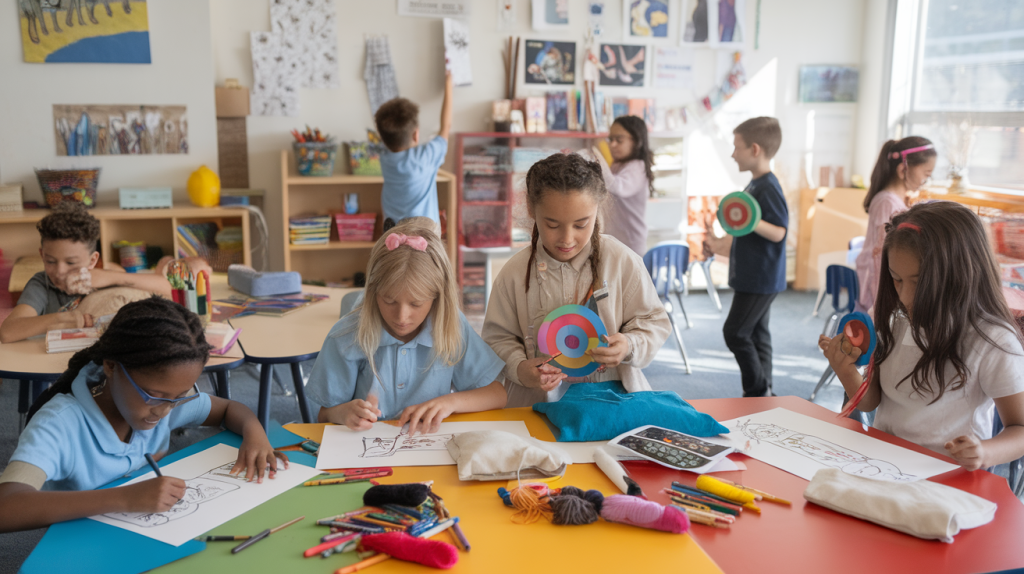Art games bring excitement to the classroom while helping students develop creativity and essential skills.
These games make learning more interactive and help students understand art concepts in a fun way. Teachers can use them to engage students of all skill levels, making art lessons more enjoyable and effective.
This guide will explore different types of art games that are great for classrooms. It will cover the benefits of using art games in education and provide a list of activities that encourage creativity, teamwork, and skill development.
If you are looking for a quick warm-up activity or a game that reinforces artistic concepts, these ideas will help keep students engaged and inspired.
Benefits of Incorporating Art Games in Education
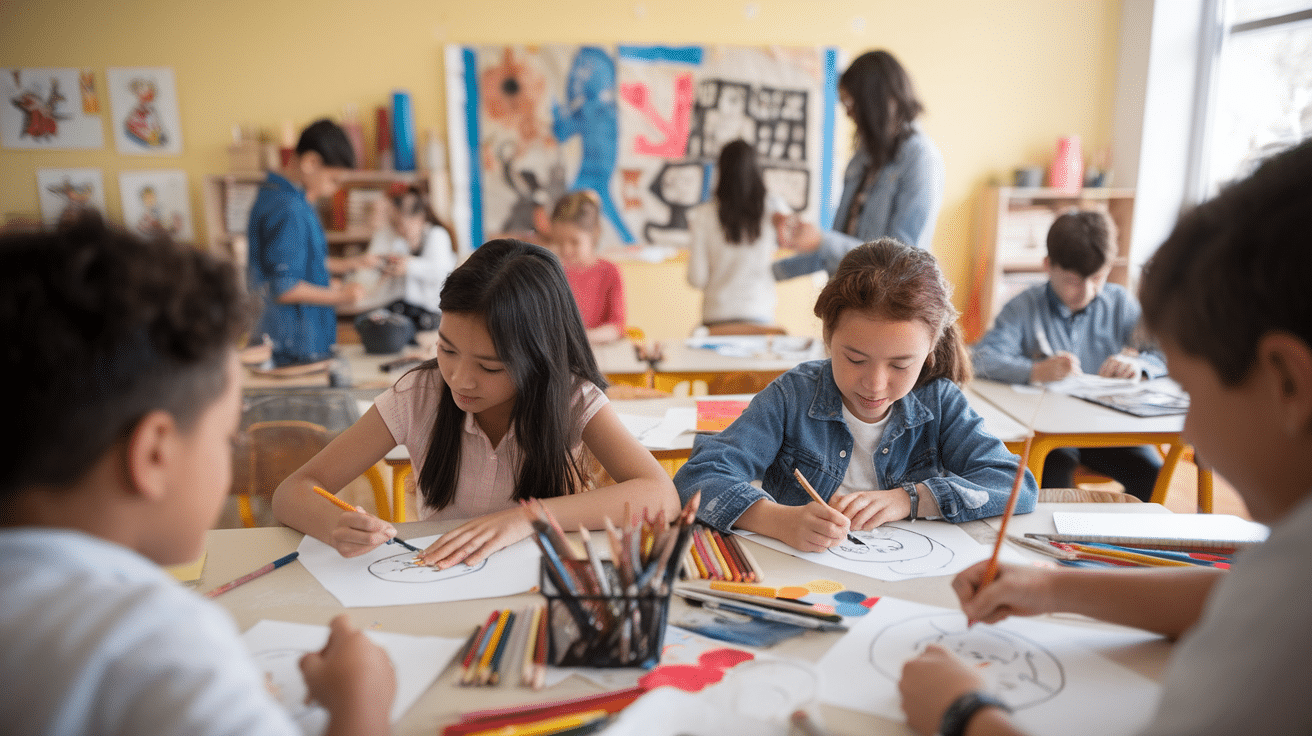
Art games do more than entertain students. They help build essential skills that contribute to a well-rounded education.
These activities allow students to express themselves while learning key concepts in a hands-on, engaging way. Games make learning more interactive, helping students retain information better than traditional methods.
Beyond technical skills, art games also teach patience, problem-solving, and adaptability. They encourage students to try new things without fear of failure, making them more confident in their creativity.
By integrating games into lessons, teachers can create a classroom environment where students feel excited to participate and explore their artistic abilities.
Enhancing Creativity and Imagination
Creativity is a key part of artistic expression. Art games help students think outside the box, experiment with different styles, and explore their artistic voices. These activities encourage students to take risks and step beyond their usual approach to creating art.
Through playful investigation of colors, shapes, and textures, students develop confidence in their creative choices.
Games allow them to work with different materials in unexpected ways, leading to fresh ideas and unique artistic expressions. This helps students understand that there are many ways to approach a creative challenge.
Developing Fine Motor Skills
Many art games involve drawing, painting, or sculpting, all of which require careful hand movements. These activities help students improve fine motor skills and hand-eye coordination, which are essential for daily tasks such as writing and using tools.
Younger students especially benefit from practicing grip strength and control over their materials. Activities that involve tracing, cutting, or molding clay help strengthen the small muscles in their hands.
As students progress, they gain better precision and dexterity, which supports their ability to create detailed artwork.
Fostering Collaboration and Social Skills
Some art games encourage teamwork, requiring students to work together toward a common goal. These activities teach communication, cooperation, and problem-solving, which are valuable in both artistic and non-artistic settings.
Working with peers allows students to share ideas and appreciate different perspectives. When they create collaborative artwork, they learn to adapt and build on each other’s contributions. These experiences teach patience and compromise, helping students develop strong social skills.
Collaboration also helps build a sense of community in the classroom. Students feel more connected when they engage in creative activities together, making the learning environment more positive and inclusive.
Reinforcing Art Concepts
Games can help students understand fundamental art concepts such as color theory, composition, and design principles. When students engage in hands-on activities, they retain information better and form a deeper connection with the material.
For example, a game that challenges students to find color matches in their environment can reinforce lessons about primary and secondary colors. A drawing game that involves creating compositions based on random prompts can help students understand balance and proportion.
Teachers can make complex concepts more accessible and engaging by using games to reinforce lessons. Learning through play helps students develop a lifelong appreciation for art and creativity.
Recommended Art Games for the Classroom
Introducing fun and educational games into the classroom can make art lessons more effective and engaging for students.
These games not only provide hands-on learning experiences but also help foster creativity, teamwork, and problem-solving skills. Here are some enjoyable and educational art games that students will love.
1. Color Wheel Hunt
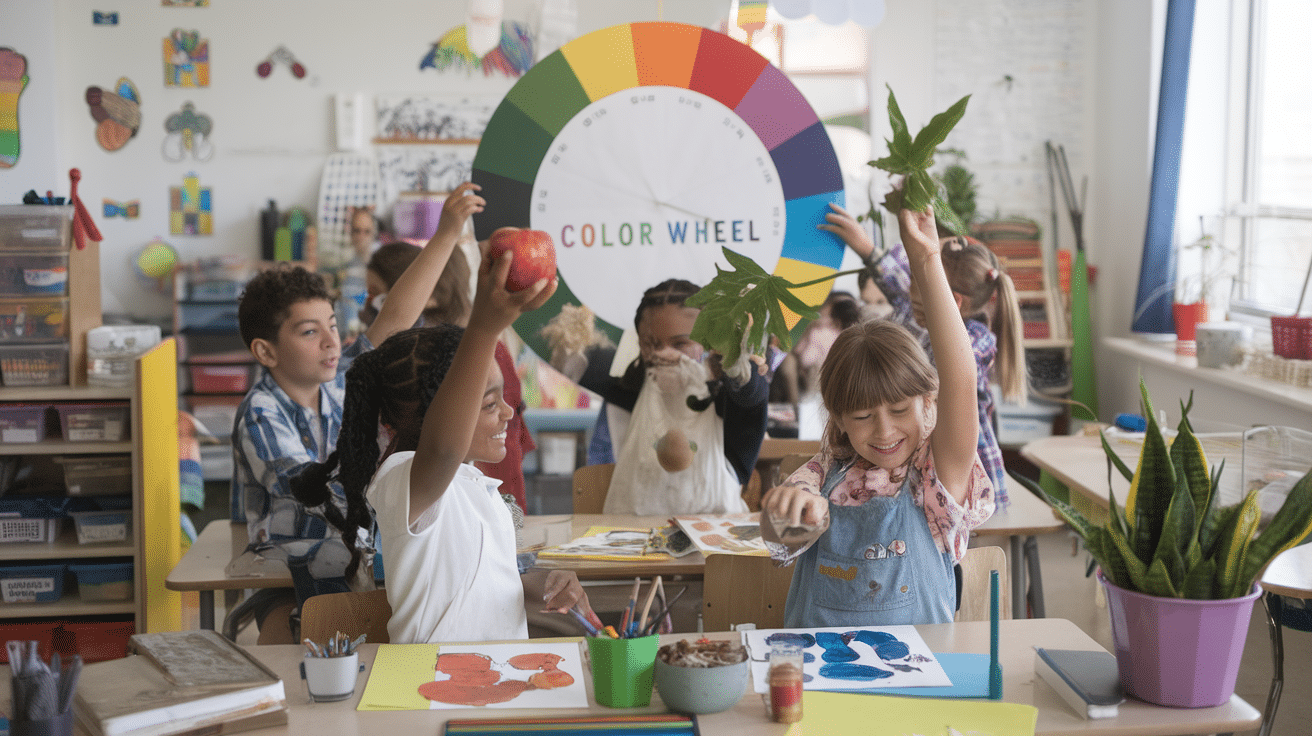
The Color Wheel Hunt is a fun way to teach students about colors while getting them moving around the classroom. It helps reinforce the understanding of primary, secondary, and tertiary colors by encouraging students to see these concepts in real life.
- Objective: Teach students about primary, secondary, and tertiary colors in a fun and hands-on way.
- Benefits: Helps students identify colors in their environment and understand how they relate to one another.
- Implementation: Provide each student with a color chart or wheel. Have them explore the classroom or outdoor area to find items that match each color. For example, they might find a red apple for the primary red color, a green leaf for the secondary green, and so on. As students search for objects, they practice identifying colors and understanding color theory.
This activity not only teaches students about the color wheel but also encourages active participation and helps them make connections between abstract concepts and real-world examples.
2. Texture in a Bag
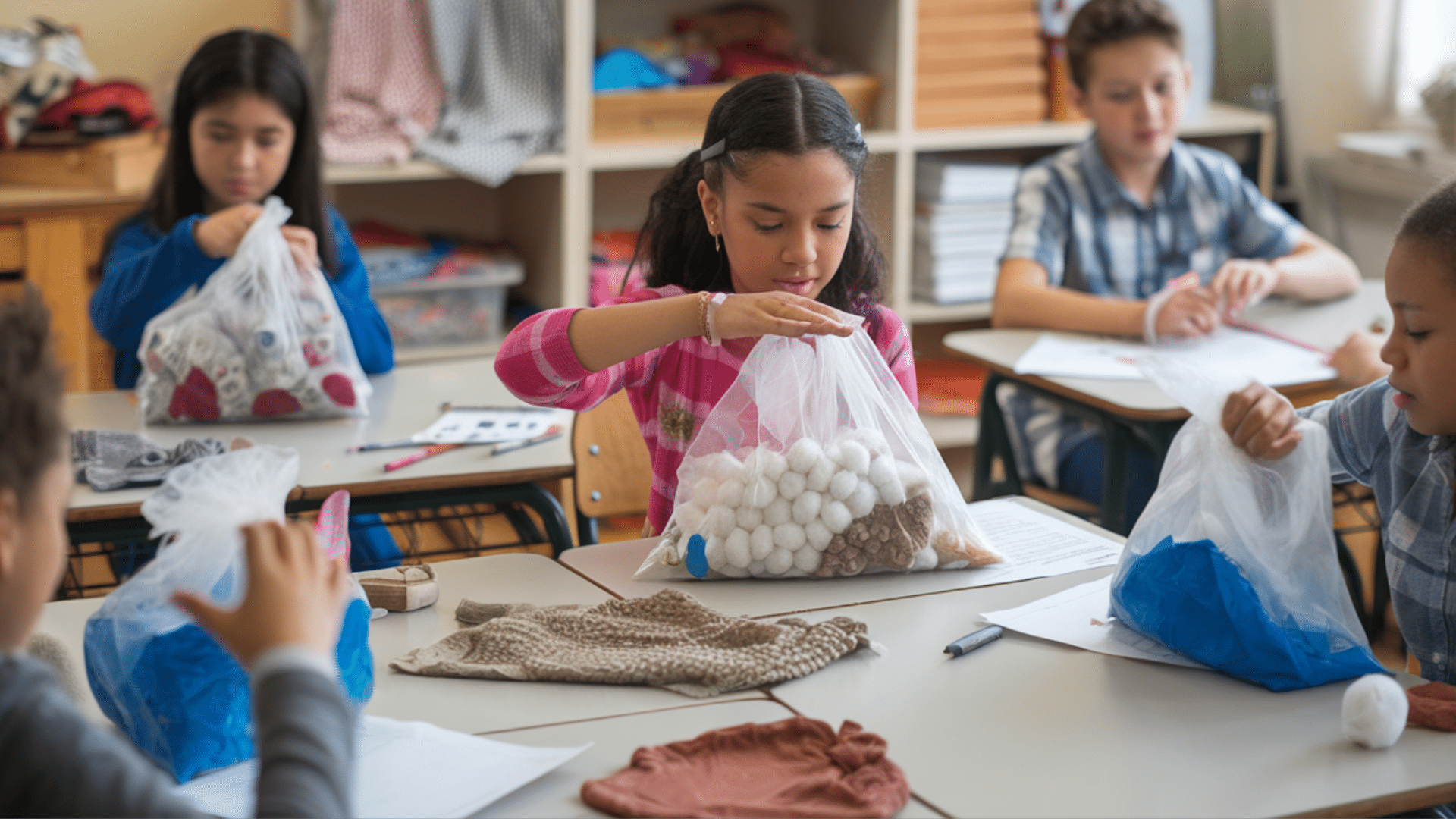
In this sensory game, students use their sense of touch to identify objects with different textures without seeing them. This activity encourages students to engage with materials and develop their descriptive language skills.
- Objective: Help students explore different textures and improve their ability to describe them.
- Benefits: Encourages sensory awareness and develops fine motor skills while fostering verbal communication.
- Implementation: Gather various objects with different textures (such as fabric, sandpaper, cotton balls, and plastic) and place them in a bag. Students take turns feeling each object and describing it without looking. For example, they might describe an object as “rough,” “soft,” or “bumpy.” This game helps students connect words with sensory experiences, enhancing their vocabulary and their ability to express their observations.
It’s a great activity for younger students or any group needing a creative break from traditional lessons, and it helps them practice observational skills.
3. Partner Drawing
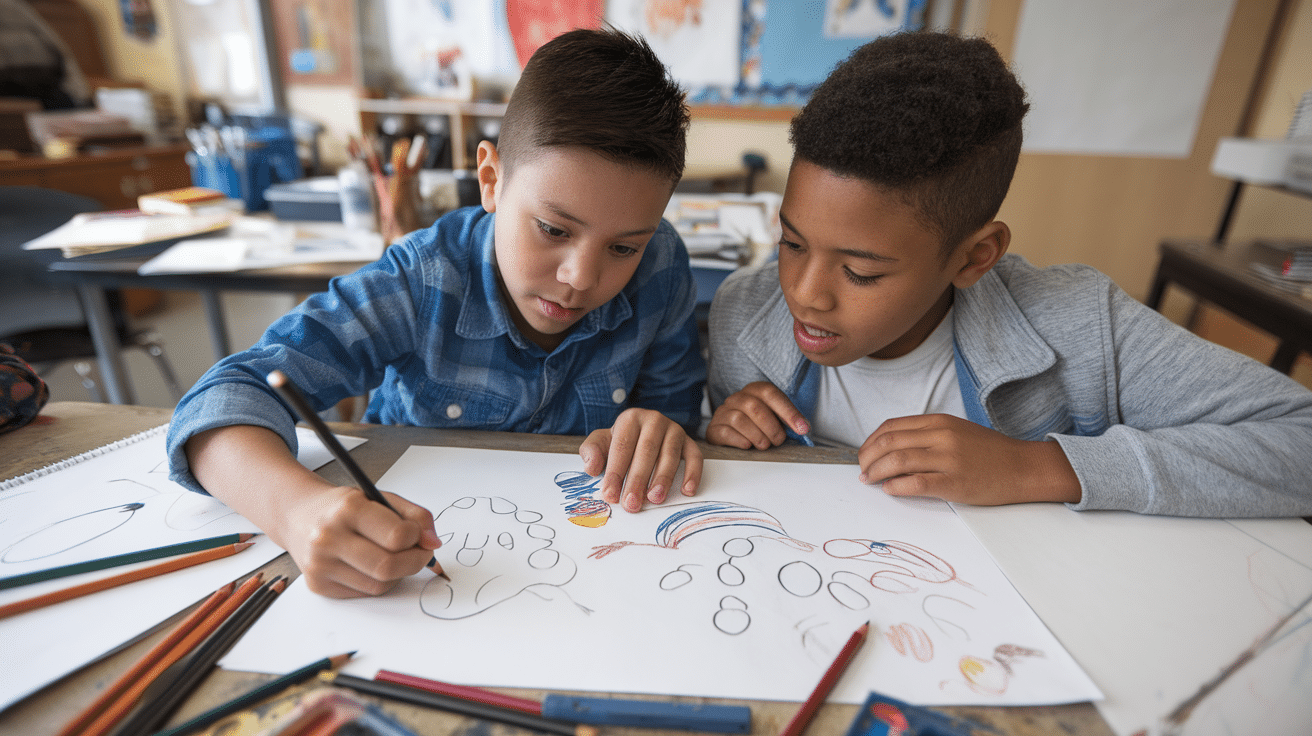
Partner Drawing is an exciting collaborative art game that encourages students to work together and think creatively. Its unpredictable nature helps students develop adaptability, communication, and teamwork skills.
- Objective: Encourage teamwork and creativity in an unpredictable way.
- Benefits: Helps students develop adaptability, communication skills, and cooperative creativity.
- Implementation: One student starts by drawing part of an image and then passes it to their partner. The partner adds to the drawing, continuing the process until the artwork is complete. This alternation encourages collaboration and helps students think in new directions as they build off each other’s ideas. For example, one student might begin drawing a house, and the partner might add trees and a sky, transforming the drawing into a collaborative scene.
This game also challenges students to accept others’ ideas and to continue creating without knowing exactly how the final piece will turn out.
4. Artistic Telephone
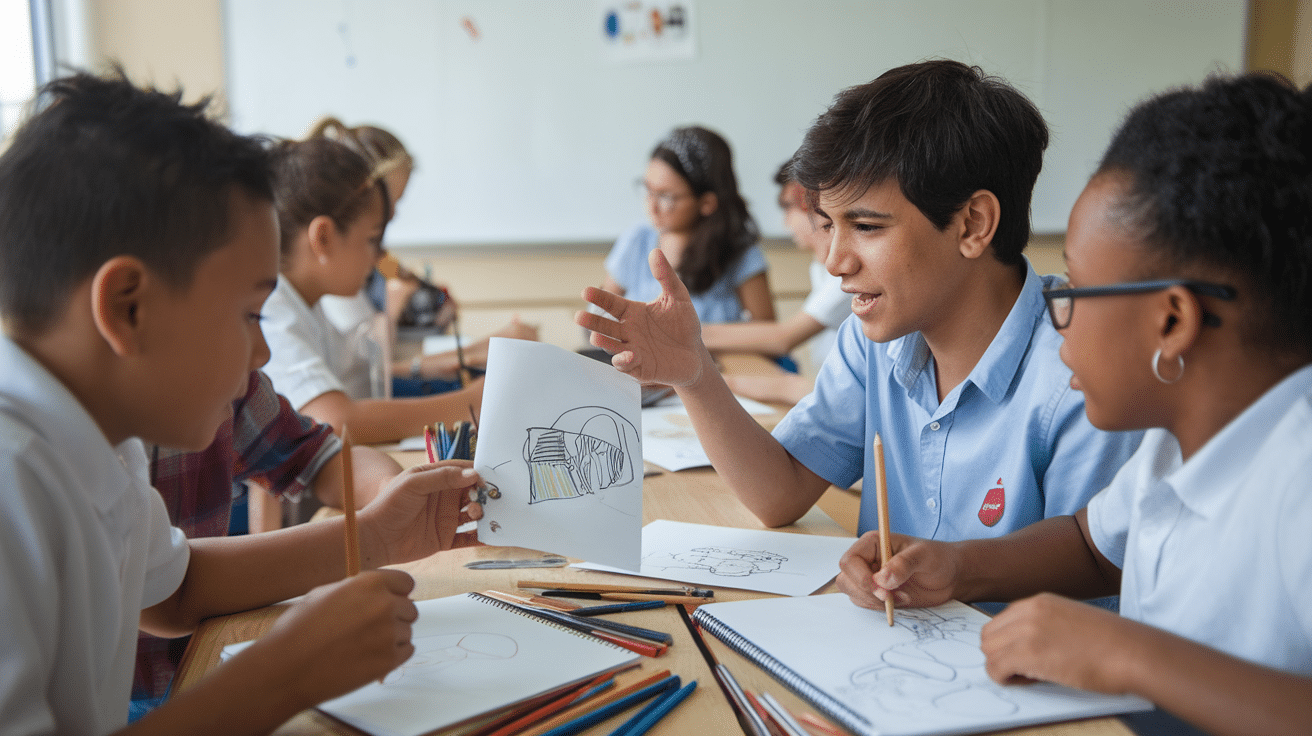
Artistic Telephone is a visual spin on the traditional telephone game. In this version, students translate words into drawings, testing their ability to communicate clearly and interpret visual descriptions accurately.
- Objective: Help students practice visual interpretation and storytelling through drawing.
- Benefits: Encourages careful listening, observational skills, and creative problem-solving.
- Implementation: One student starts by describing an image or a scene in words to the next student, who then draws it based on the description. The next student then describes their drawing to another student, who continues adding to the drawing. The process continues until everyone has participated, and the final drawing is compared to the original description. This game helps develop attention to detail and enhances students’ ability to visualize and communicate ideas effectively.
Artistic Telephone works well for reinforcing the importance of clear communication and practicing descriptive drawing skills in a fun and engaging way.
5. Exquisite Corpse
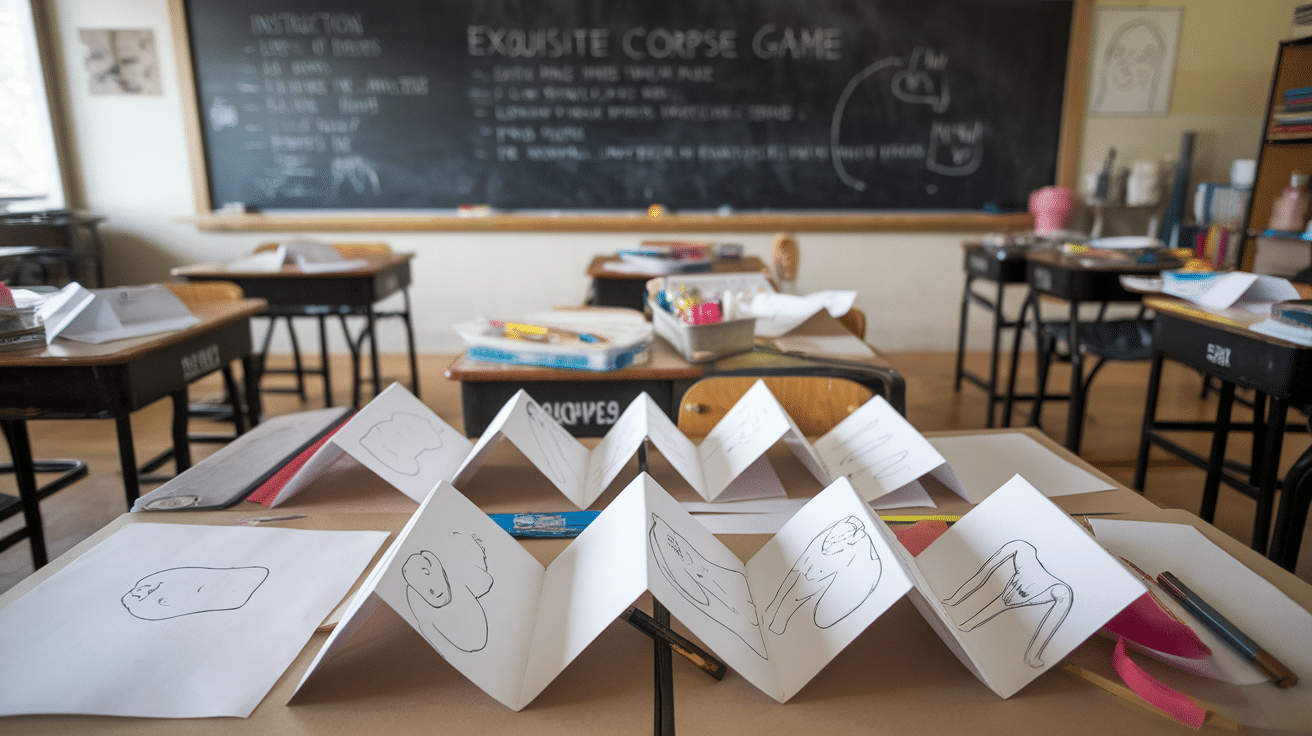
Exquisite Corpse is a surrealist drawing game that allows students to collaborate while creating a surprising and often humorous final piece. This game helps students tap into their creative potential and encourages imaginative thinking.
- Objective: Encourage creative thinking and teamwork in a fun and collaborative way.
- Benefits: Fosters imagination and allows students to collaborate without seeing each other’s work.
- Implementation: Take a piece of paper and fold it into sections. Each student draws in one section, but they cannot see what others have drawn. After completing their section, the paper is folded so that each student only sees part of the image. Once everyone has contributed, the paper is unfolded to reveal the completed image. This game helps students think creatively while collaborating, as the final result is often a surprising mix of styles and ideas.
Exquisite Corpse challenges students to embrace unexpected outcomes and learn how to work together as a team, with a focus on imagination and creativity.
6. Roll-a-Dice Drawing
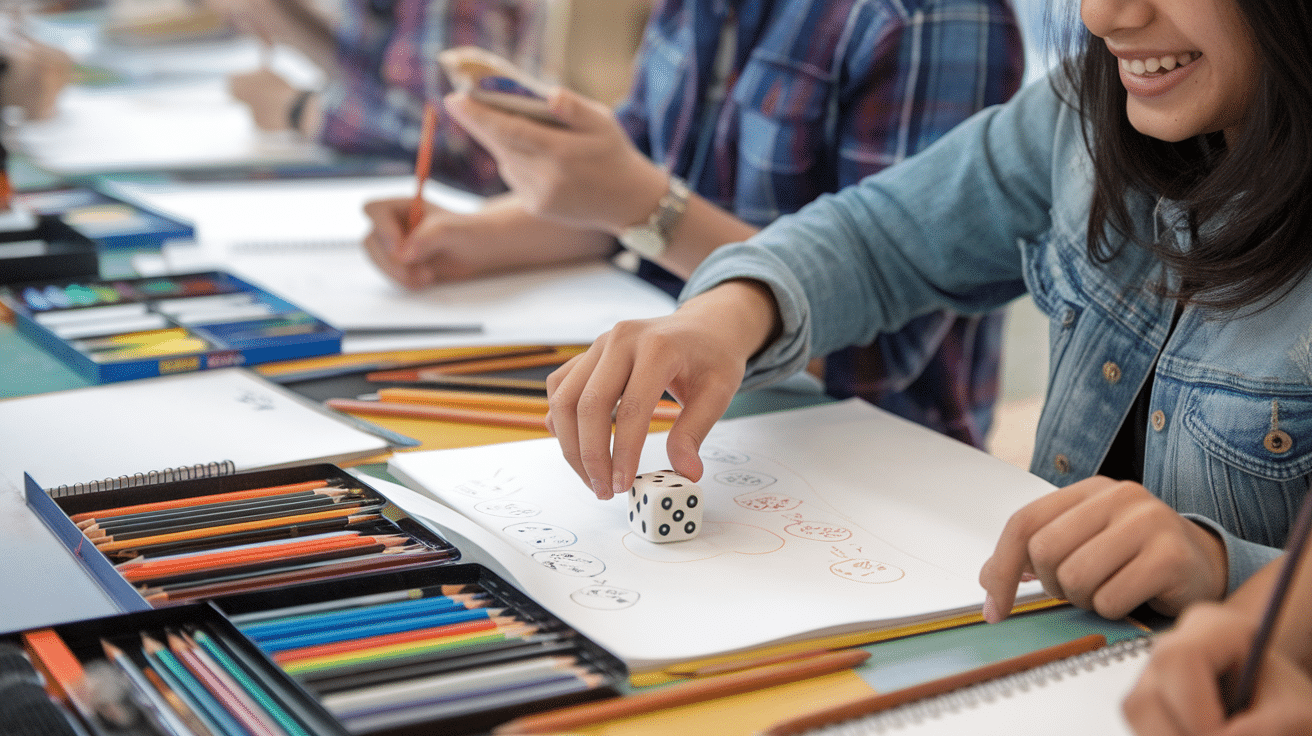
Roll-a-dice drawing adds an element of chance to the artistic process. By rolling dice, students randomly determine elements of their drawing, allowing for spontaneous creative decisions.
- Objective: Introduce randomness into the creative process to encourage adaptability.
- Benefits: Encourages flexibility, problem-solving, and creative decision-making.
- Implementation: Assign different features of a drawing (such as shapes, characters, or colors) to each number on the dice. Students roll the dice and create the corresponding element in their drawing. For example, if they roll a 3, they might need to include a triangle in their artwork. This method allows students to create something new and unexpected while practicing basic drawing skills.
This game introduces a fun twist to the creative process, making it more exciting for students who may otherwise find drawing intimidating.
7. Digital Art Puzzles
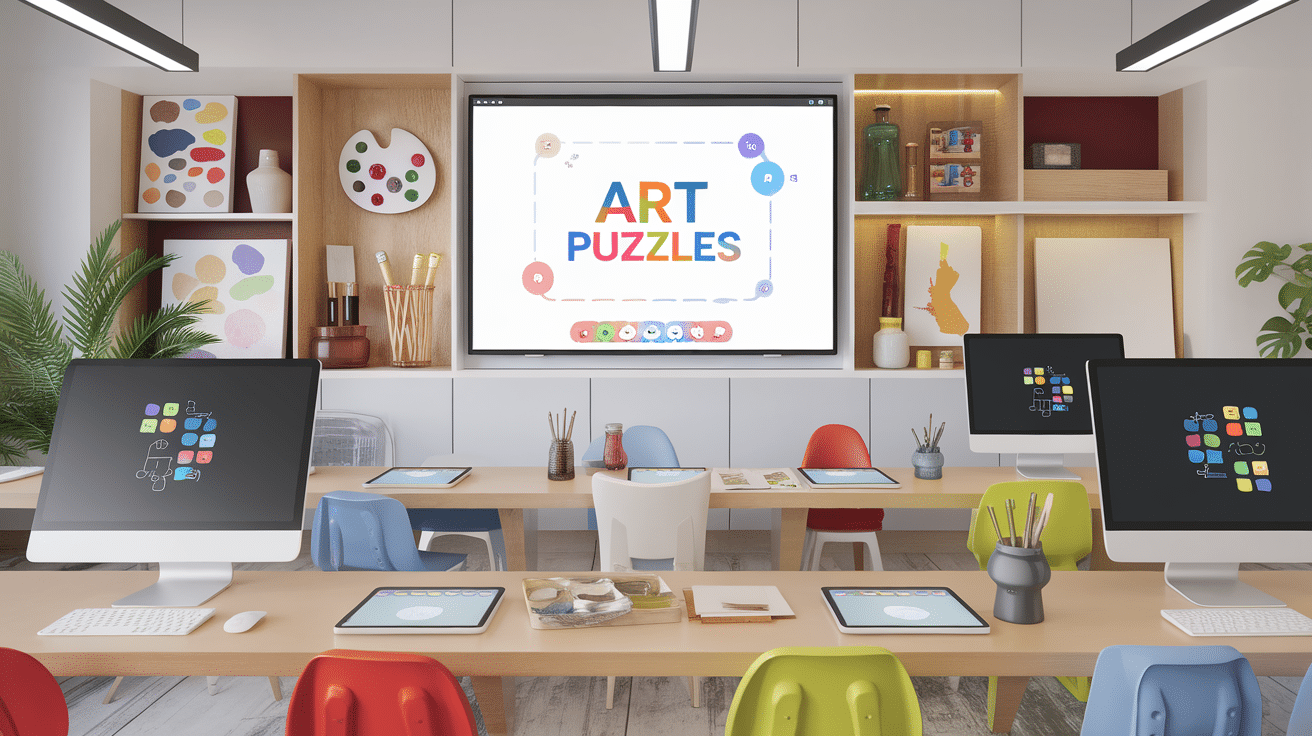
Digital Art Puzzles combine art education with technology. These online puzzles challenge students to solve art-related problems, like arranging pieces of artwork or matching colors, to reinforce their understanding of art concepts.
- Objective: Reinforce art concepts through interactive and digital engagement.
- Benefits: Encourages problem-solving and connects technology with art education.
- Implementation: Use online platforms that offer interactive art puzzles, such as arranging pieces of famous artwork, completing color-matching challenges, or designing simple digital artwork. Students can work on individual puzzles or collaborate as a class. These puzzles can be tailored to different levels of difficulty to match the student’s abilities.
Digital Art Puzzles offer a modern twist on traditional art games, allowing students to engage with art in a tech-friendly way.
Implementing Art Games Effectively
Using art games in the classroom can be a fun and enriching experience for students. However, careful planning is essential to ensure their effectiveness and to meet educational goals.
Art games should be engaging and serve as a tool to enhance creativity, develop skills, and reinforce concepts.
Educators can ensure that the games are enjoyable and beneficial to students’ learning experiences by following a few key strategies.
Setting Clear Objectives
Before starting any art game, it’s crucial to have clear objectives. Every game should have a specific purpose that aligns with the lesson plan and the skills you want to teach.
The goal could be to foster creativity, improve specific techniques, or dive into art history. Defining the learning outcomes helps students understand the purpose of the game and what they are expected to achieve.
For example, if the focus is on color theory, an art game that teaches students about primary, secondary, and tertiary colors would be ideal.
Clearly stating the objectives at the start of the activity helps students stay focused and understand the connection between the game and their overall learning. This approach ensures that the game remains educational and aligns with the lesson plan’s goals.
Adapting to Student Age and Skill Levels
Each class includes students with different learning styles, abilities, and levels of knowledge. For art games to be effective, they need to be adjusted to suit the age and skill level of the students.
Younger students might enjoy simpler games, such as basic drawing or coloring, while older students can tackle more complex challenges like creating large-scale collaborative art or engaging in art critiques.
Offering variations of the same game allows students at different levels to participate fully and benefit from the experience.
For instance, while younger students may play a game that focuses on identifying shapes and colors, older students could play a similar game that explores color relationships and their impact on a composition. This approach ensures that all students are engaged and challenged appropriately.
Ensuring Inclusivity
Inclusivity is a key factor in any classroom. Art games should encourage participation from every student, regardless of their learning style or ability.
Some students might learn better visually, others through touch, and some may have physical limitations. Offering modifications ensures everyone can engage with the game.
For example, if an activity involves drawing and a student struggles with fine motor skills, allow them to describe their ideas verbally or use digital tools to create art.
Making simple adjustments, such as providing large tools for students with physical challenges or offering alternatives to drawing, makes the game more inclusive.
By ensuring that all students can participate, we encourage cooperation, communication, and a sense of belonging in the classroom.
Balancing Fun with Educational Value
While games should be fun, they must also reinforce educational goals. The most effective games combine enjoyment with learning, allowing students to build creative and technical skills while having fun.
Games that are both enjoyable and educational will help students practice what they’ve learned in a relaxed, creative setting. For example, drawing games can help reinforce techniques like shading, proportion, or perspective.
Similarly, group art projects help students develop teamwork, communication, and problem-solving skills. By balancing fun with educational value, students will stay engaged while also gaining valuable insights into the world of art.
Conclusion
Art games provide an exciting way to engage students while reinforcing important artistic skills. Focusing on creativity, teamwork, or technical skills, these games help make learning more interactive and enjoyable.
By using structured and engaging activities, teachers can create an environment where students feel inspired to express themselves. These games can be adapted for different age groups, ensuring all students benefit from the experience.
Educators can explore various games and adjust them based on classroom needs. Making art lessons fun and interactive encourages students to develop a deeper appreciation for creativity and artistic expression.
These activities not only enhance students’ skills but also foster a love for the arts, making them more excited and motivated to learn.
Frequently Asked Questions
What are Art Games in The Classroom?
Art games are interactive activities designed to engage students in creative tasks while reinforcing important art concepts, such as color theory, composition, and technique. These games make learning fun and allow students to develop artistic skills in a hands-on, enjoyable way.
How Do Art Games Benefit Students?
Art games promote creativity, fine motor skills, teamwork, and communication. They also help students practice problem-solving and critical thinking. By playing these games, students improve their understanding of art concepts and build confidence in their creative abilities.
Can Art Games Be Used with Students of All Ages?
Yes! Art games can be adapted to suit different age groups and skill levels. Younger students might play simpler, tactile games, while older students can take on more complex challenges. This flexibility allows all students to benefit from the activity.
How Can I Incorporate Art Games Into My Classroom?
You can integrate art games into your lessons by choosing activities that align with your teaching goals. For example, if you want to teach color theory, you can play the Color Wheel Hunt game. Make sure the games are fun but also reinforce educational objectives to keep students engaged and learning.
Are Art Games Suitable for Virtual Classrooms?
Yes! Many art games can be adapted for online learning, such as digital art puzzles or virtual drawing challenges. These activities help maintain engagement and provide students with creative outlets, even in a virtual setting.


